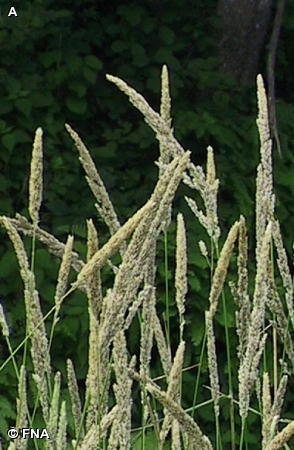
Strongly rhizomatous sod-forming perennial forming dense, almost impenetrable colonies in open moist sites. The broad (up to 1 inch wide), smooth leaf blade has a prominent, usually visible, white membranous ligule at its base (D,E). Flowering stems from 3-6 feet tall bear compact lobed panicles with ascending branches. In flower, the panicles are open and often tinged with red or purple (F,G). They contract and fade to a light straw color at maturity (A,H,I).
Wet ground in low areas, marshes and ditches. Reed Canary Grass is common at Fontenelle Forest along Stream Trail and in the wet area at the entrance of Handsome Hollow. At Neale Woods it is common on portions of Missouri River Ecology Trail (B).
This variable species, which includes both native and introduced populations, has been planted for hay, forage and erosion control. Once established, it can be difficult to control. It is the dominant plant in many moist, open floodplain sites at FF/NW where it is spreading and displacing other more desirable native plants.
The content of NatureSearch is provided by dedicated volunteer Naturalists of Fontenelle Forest who strive to provide the most accurate information available. Contributors of the images retain their copyrights. The point of contact for this page is: Neal Ratzlaff.

